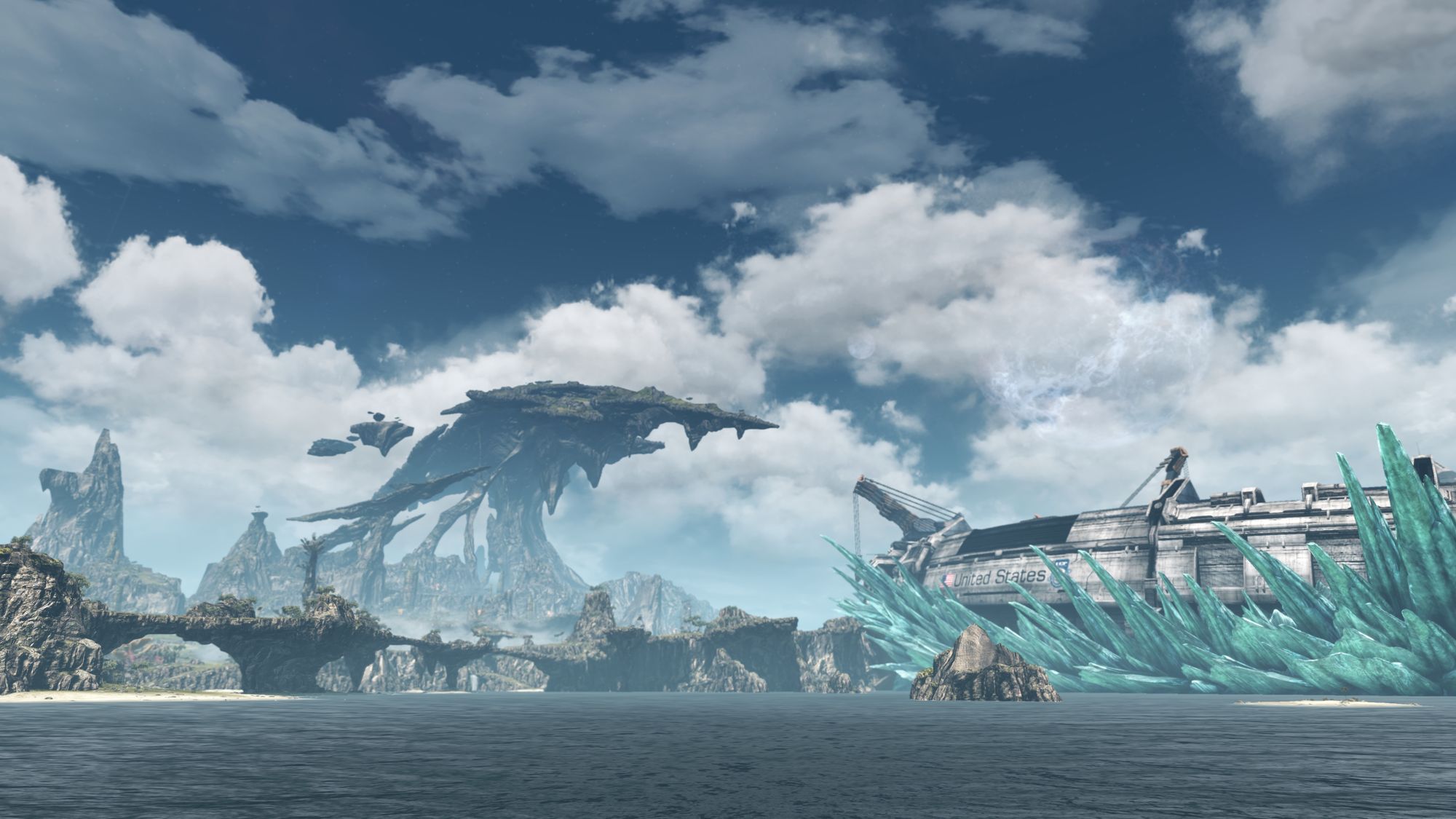Xenoblade Chronicles X Was the Mech Game I Always Wanted
Incredible mech action in an alien world

In late 2012, Nintendo released the ill-fated Wii U. Successor to the massively successful Wii, the Wii U continued Nintendo’s approach to fun and innovation by introducing a very unconventional controller alongside its superior online capabilities and fully backwards compatible features. While the Wii U (to this day) has one of the best virtual consoles available for any Nintendo system, its weak game lineup and extremely limited third party support eventually killed the system by 2017, giving it an extremely short lifespan for a home console.
My siblings and I picked up our Wii U for one reason: the Wind Waker remaster. We saved up and waited for the special edition console to drop, and I thoroughly enjoyed playing through one of my favorite Zelda titles with the Wii U’s unique controller. Despite the brief fun we had with a smattering of the console’s games, it wasn’t until the eagerly awaited release of Xenoblade Chronicles X that I felt like the Wii U had finally found its redeeming quality.
A spiritual successor to the Wii’s Xenoblade Chronicles, XCX explored a different route compared to its predecessor. Executive director Tetsuya Takahashi (famed for Xenogears, Xenosaga, and work on Chrono Trigger and Final Fantasy VI) wrote the scenario for XCX but left the bulk of both design and direction to his new team at Monolith Soft, who had recently been acquired under the Nintendo banner. The creative freedom that Monolith has enjoyed under Nintendo — compared to the restrictive nature of design they suffered at Namco — led to this unique, fresh take on both the open-world RPG and mech combat.

The design and size of the alien planet in XCX was impressive to me from the jump, with the sheer size of the game immediately apparent when paired with the draw distance of far away mountains and kaiju-esque alien creatures. At 400 square kilometers across five distinct continents, the game’s actual scope is intimidating. Mira’s design was creative, ethereal, and inarguably alien. There is an almost naturepunk aspect to the flora and fauna of the world’s indigenous design and gigantic layout. In order for the Wii U to run this massive game, they released free “data packs” that could be downloaded to drastically reduce load time. This made the file size of the game massive, and it needed a secondary memory card to comfortably hold it.
XCX took a refreshing approach to its progress by hiding the mechs behind the first thirty hours of gameplay, tasking the players with several quest lines that culminated in the hard-earned (and extremely desired) mechs, called SKELLs in-game. After gaining access to your first SKELL, the game allows your to further create additional mechs and then fully customize them from both an aesthetic and weapons perspective. Taking to the skies with an entire party of SKELL units for the first time is an elating experience, and only the first step on the road to eventually fighting horizon-spanning tyrants.
While the story is sparse for a Tetsuya Takahashi title, the world building of XCX is immensely satisfying. Your player-created protagonist works under the designation of the BLADEs, fulfilling requests for the citizens and government of New Los Angeles as they attempt to create a habitable home upon this hostile alien planet. Humankind has left Earth (a Takahashi staple) and after being thrown out among the stars, now exists among the indigenous network of plants and animals that comprise their new alien home of Mira. The roles and tasks fulfilled throughout NLA allow the player to not only watch the BLADEs grow, but also craft an entire team of SKELL mechs that can explore the entire planet and length, eventually taking to the skies to explore far-off dangers.
Xenoblade Chronicles X utilized the Wii U GamePad in such a creatively refreshing way that it was a massive disappointment to me when the generation came and went and no other developer took pains for equivalent design. While handling simple functions such as combat control and the map layout, the GamePad touch screen also served as the resource management system for each of the planet’s continents. Separated into hexagonal zones, the FrontierNav allowed the player to mine for minerals, materials, and fuel by placing together chains of mining probes. These probes net material gains in real time, and there are bonuses in planting your probes in new orders to create better chains.
Combat was a blast in XCX, designed similarly to the party combat in Xenoblade Chronicles. Where the combat excelled was in the mix of both melee and ranged combat, and how the interaction between classes and buffs created extremely unique party builds that the player could utilize across their conquest of the planet. On top of which, the SKELL combat was its own unique separate entity from the on-foot combat and exploration, and there was reason to make sure both your party and SKELL unites were properly equipped and customized. Enemies (especially the kaiju-sized foes) had appendages that could be targeted and destroyed, altering the layout of combat. The larger the enemy, the more likely that you would need your SKELL to fight it in combat, regardless of its level relation to your party.

Some fans might be surprised to discover that Monolith Soft was an immense help in designing the functional open world of Breath of the Wild, but for the few players who were lucky enough to experience Xenoblade Chronicles X these expertly crafted world elements were an expected marvel. Unlike the majority of open world titles out there, XCX didn’t show you an impressively beautiful array of natural locales and then hide them behind physical inaccessibility. Because of the flight mode of your SKELL units, everything within the alien planet is accessible to the player. That huge mountain, that floating island, that distanced whale-sized alien tyrant? The world within XCX was fully accessible and explorable, and traversing it within the SKELL units was an immensely satisfying experience.
XCX also housed a fairly impressive online component that allowed players to link up together for raid battles and world bosses. There were seasonal drops, post-game items, and super bosses that added a unique layer to the game and fulfilled the satisfying component of taking your well-crafted SKELL into a battle that could truly test your hundreds of hours of mettle and grind.
It must be said that Xenoblade Chronicles X was a bold, risky game, and we are lucky for having experienced it. The game knew exactly what it was and what it set out to do, and despite it being an open world masterpiece it was still strictly a JRPG and thus offered an experience different from what many players found popular at the time. Though its narrative wasn’t as slick and refined as previous Takahashi titles, it made an attempt at delivering its story through a smattering of quests and details that still felt more coherent then the sprawling, distracting mess that happens in so many western open world titles.

While Xenoblade Chronicles X sold moderately compared to other titles, it actually sold well considering the console that it was made for. A huge chunk of Monolith Soft fans own Nintendo Switches, the console that is currently home to Xenoblade Chronicles: Definitive Edition, Xenoblade Chronicles 2 and Xenoblade Chronicles 2: Torna the Golden Country. Xenoblade Chronicles X is ripe for a remaster, with many fans expecting that the game will come to the Switch now that Nintendo currently has the most accessible and popular console on the market. Considering that the online component of XCX is also defunct, there is an opportunity for the game to enjoy an entirely new community on the Switch that would be even larger and more enjoyable than originally on the Wii U.
Five years in, I’m incredibly grateful I was able to experience the majesty of Xenoblade Chronicles X and I can only hope that we haven’t seen the last of it from Monolith Soft.
